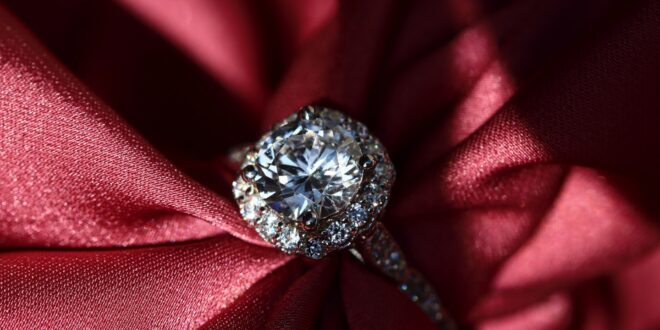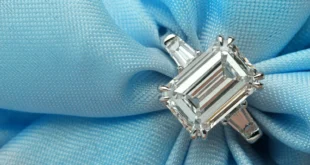Diamond rings symbolize love, commitment, and luxury across different cultures and traditions. They are often chosen to mark special occasions, such as engagements and anniversaries, making them one of the most cherished pieces of jewelry.
With their enduring appeal and significant monetary value, understanding their pricing is crucial for anyone looking to purchase one. This blog post aims to provide a comprehensive price guide and delve into the factors influencing the price of diamond rings, offering valuable insights into carat weight, cut, clarity, and color, among other considerations.
Table of Contents
Factors That Influence Diamond Ring Prices
The price of a diamond ring is determined by a combination of factors, mainly the Four Cs: carat weight, cut, clarity, and color. Carat weight measures the size of the diamond, cut refers to how well the jewel has been shaped, clarity grades the presence of imperfections, and color evaluates the diamond’s tint.
Each of these factors interacts differently to influence the overall price. For example, a diamond with a higher carat weight but lower clarity can be priced similarly to a smaller jewel with flawless clarity. Understanding how these elements interplay is pivotal in evaluating the price and making informed decisions when purchasing diamond rings.
Carat Weight and Its Impact on Price
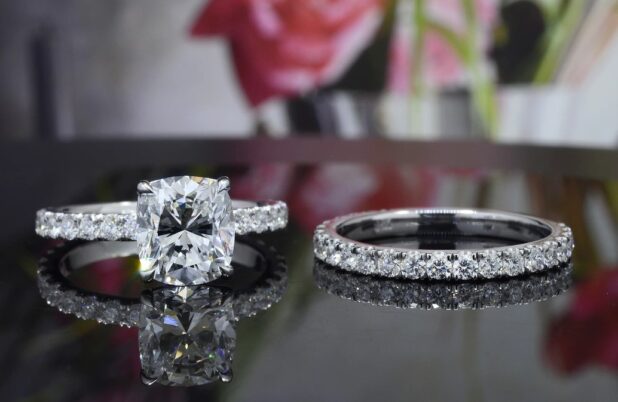
Carat weight is one of the most significant determinants of a diamond’s price. It’s a unit of mass, with one carat equivalent to 0.2 grams. Generally, as carat weight increases, so does the price of the diamond. However, the increase is not always linear; a two-carat diamond could be up to four times more expensive than a one-carat diamond due to its rarity.
Different carat weights fall into distinct price ranges, affected by other factors like cut, clarity, and color. For instance, a one-carat jewel of average quality might cost anywhere from $2,500 to $18,000, while a high-quality three-carat diamond could exceed $50,000.
The Importance of Diamond Cut
The cut of a jewel is paramount to its beauty and value. It determines how well the diamond reflects light, enhancing its brilliance. Diamond cuts are graded from Excellent to Poor, and the quality of the cut significantly influences the price.
A well-cut diamond will exhibit more sparkle and shine, commanding higher prices compared to poorly cut counterparts. For instance, an Excellent cut one-carat diamond may cost up to 25% more than a Fair cut diamond of the same weight and quality.
Clarity Grades and Their Price Implications
Clarity is another crucial factor, assessing the diamond’s imperfections or inclusions. The Gemological Institute of America’s (GIA) clarity scale ranges from Flawless (no inclusions or blemishes visible under 10x magnification) to Included (inclusions and/or blemishes visible to the naked eye).
Diamonds with fewer inclusions are rarer and pricier. A one-carat jewel with a VS1 clarity grade may cost between $4,000 and $8,000, depending on other factors, while one with an SI2 grade may range between $2,500 and $5,000.
Diamond Color and Its Price Impact
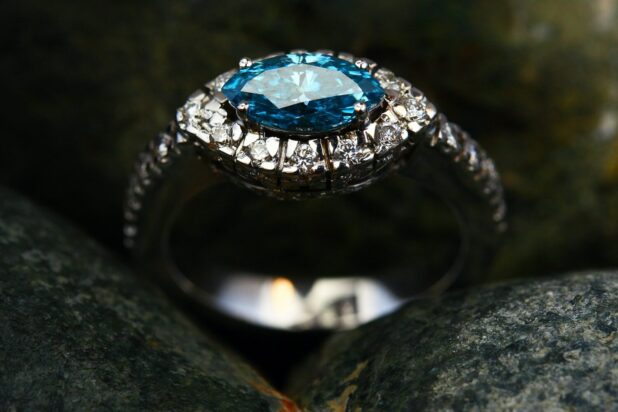
Diamond color evaluates the lack or presence of color in a diamond, with grading scaling from D (completely colorless) to Z (light yellow or brown). Generally, a more colorless diamond commands higher value, as it’s rare and highly desired. Hence, a diamond with a D color grade can cost substantially more than those rated H or I, even if other quality and weight factors are comparable.
Setting and Metal Options
The choice of setting and metal play pivotal roles in influencing a jewel ring’s overall aesthetic and cost. Various settings exist, ranging from the timeless prong setting to the sleek and modern tension setting. Each offers a distinct aesthetic appeal and a level of security for the diamond. The metal selected, be it platinum, white gold, yellow gold, or rose gold, directly affects the overall price. Platinum is often more expensive, attributing to its longevity and scarcity.
Popular Diamond Ring Styles and Their Costs
Diamond ring styles vary significantly, each coming with a distinct price tag influenced by design complexity and jewel quantity. A solitaire setting, emphasizing a single diamond, may differ price-wise compared to intricate designs like halo or three-stone settings.
These elaborate styles involve meticulous craftsmanship and additional diamonds, elevating their prices. High-profile celebrities like Beyoncé and Kim Kardashian have often been spotted flaunting such lavish and exquisite designs, providing a reference for the pricing of luxurious, high-end diamond rings.
Lab-Grown Diamonds vs. Natural Diamonds
Lab-grown diamonds are emerging as noteworthy alternatives to natural diamonds, typically being priced around 20%-40% less. These diamonds possess identical physical and chemical properties to their natural counterparts but are characterized by reduced ethical and environmental implications.
While some consumers are drawn to the longstanding tradition and inherent rarity of natural diamonds, a growing number are choosing lab-grown diamonds, prioritizing sustainability and budget-friendly options.
Certification and Its Impact on Price
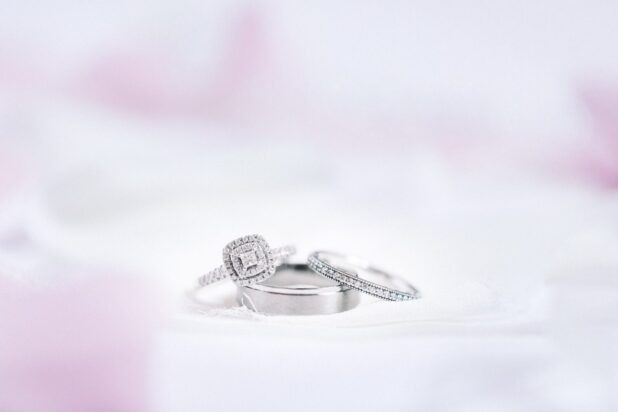
Acquiring a certification from esteemed grading laboratories like the GIA can serve as an assurance of a diamond’s quality and authenticity, consequently enhancing its value.
Certified diamonds undergo meticulous evaluation based on standardized criteria, ensuring a level of transparency that enables buyers to compare diamonds with precision and confidence.
Hidden Costs and Buying Tips
When embarking on purchasing a diamond ring, buyers should remain vigilant about potential hidden costs like insurance, maintenance, and possible resizing expenses. Conducting comprehensive research, honing negotiation skills, and possessing a keen awareness of prevailing market prices are essential in securing optimal value within one’s budget.
Whether opting to purchase from traditional brick-and-mortar stores or exploring reputable online retailers, being well-informed and cautious can make the buying process smoother and more rewarding, ensuring the acquisition of a piece that resonates with individual tastes and values.
Conclusion and Summary
Understanding the multifaceted world of diamond pricing can seem daunting. However, by considering the factors like carat weight, cut, clarity, and color, along with setting styles, metal choice, and certification, buyers can make informed decisions and find a jewel ring that suits their preferences and budget.
The balance between these factors will vary according to individual priorities and aesthetic desires, whether one values size over sparkle or color over clarity. Ultimately, being well-informed about the intricacies of jewel pricing will aid in navigating the diverse market, allowing buyers to find the perfect diamond ring that symbolizes their unique love story.
 World Magazine 2024
World Magazine 2024
